Michela Milano
UNIFY: a Unified Policy Designing Framework for Solving Constrained Optimization Problems with Machine Learning
Oct 25, 2022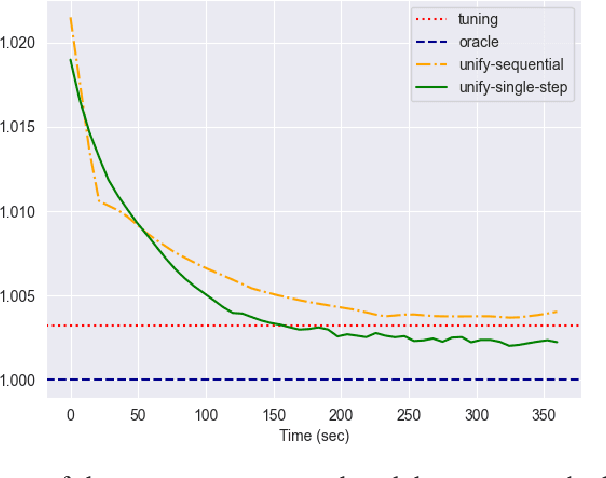
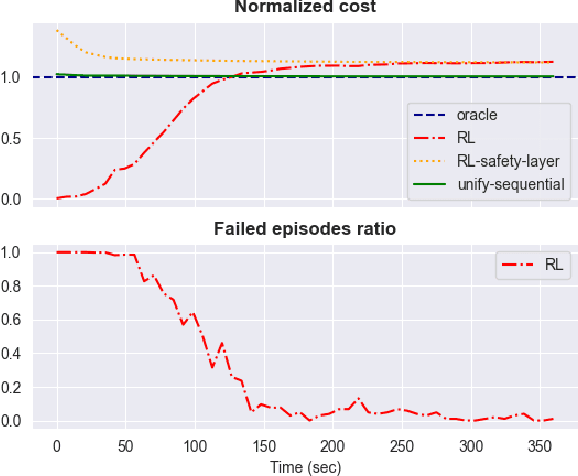
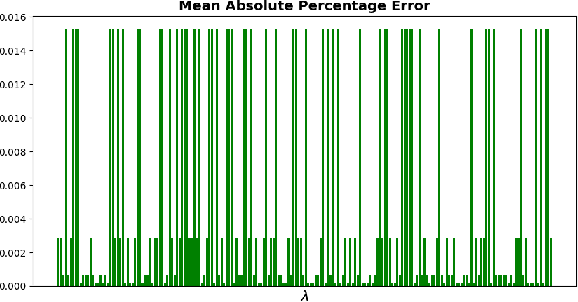
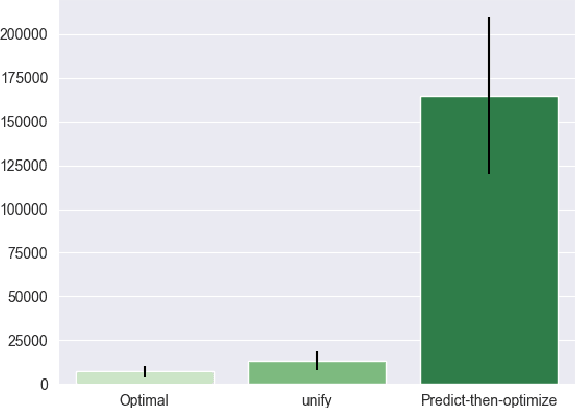
Abstract:The interplay between Machine Learning (ML) and Constrained Optimization (CO) has recently been the subject of increasing interest, leading to a new and prolific research area covering (e.g.) Decision Focused Learning and Constrained Reinforcement Learning. Such approaches strive to tackle complex decision problems under uncertainty over multiple stages, involving both explicit (cost function, constraints) and implicit knowledge (from data), and possibly subject to execution time restrictions. While a good degree of success has been achieved, the existing methods still have limitations in terms of both applicability and effectiveness. For problems in this class, we propose UNIFY, a unified framework to design a solution policy for complex decision-making problems. Our approach relies on a clever decomposition of the policy in two stages, namely an unconstrained ML model and a CO problem, to take advantage of the strength of each approach while compensating for its weaknesses. With a little design effort, UNIFY can generalize several existing approaches, thus extending their applicability. We demonstrate the method effectiveness on two practical problems, namely an Energy Management System and the Set Multi-cover with stochastic coverage requirements. Finally, we highlight some current challenges of our method and future research directions that can benefit from the cross-fertilization of the two fields.
Deep Learning for Virus-Spreading Forecasting: a Brief Survey
Mar 03, 2021
Abstract:The advent of the coronavirus pandemic has sparked the interest in predictive models capable of forecasting virus-spreading, especially for boosting and supporting decision-making processes. In this paper, we will outline the main Deep Learning approaches aimed at predicting the spreading of a disease in space and time. The aim is to show the emerging trends in this area of research and provide a general perspective on the possible strategies to approach this problem. In doing so, we will mainly focus on two macro-categories: classical Deep Learning approaches and Hybrid models. Finally, we will discuss the main advantages and disadvantages of different models, and underline the most promising development directions to improve these approaches.
An Analysis of Regularized Approaches for Constrained Machine Learning
May 20, 2020

Abstract:Regularization-based approaches for injecting constraints in Machine Learning (ML) were introduced to improve a predictive model via expert knowledge. We tackle the issue of finding the right balance between the loss (the accuracy of the learner) and the regularization term (the degree of constraint satisfaction). The key results of this paper is the formal demonstration that this type of approach cannot guarantee to find all optimal solutions. In particular, in the non-convex case there might be optima for the constrained problem that do not correspond to any multiplier value.
Improving Deep Learning Models via Constraint-Based Domain Knowledge: a Brief Survey
May 19, 2020Abstract:Deep Learning (DL) models proved themselves to perform extremely well on a wide variety of learning tasks, as they can learn useful patterns from large data sets. However, purely data-driven models might struggle when very difficult functions need to be learned or when there is not enough available training data. Fortunately, in many domains prior information can be retrieved and used to boost the performance of DL models. This paper presents a first survey of the approaches devised to integrate domain knowledge, expressed in the form of constraints, in DL learning models to improve their performance, in particular targeting deep neural networks. We identify five (non-mutually exclusive) categories that encompass the main approaches to inject domain knowledge: 1) acting on the features space, 2) modifications to the hypothesis space, 3) data augmentation, 4) regularization schemes, 5) constrained learning.
Teaching the Old Dog New Tricks: Supervised Learning with Constraints
Feb 25, 2020



Abstract:Methods for taking into account external knowledge in Machine Learning models have the potential to address outstanding issues in data-driven AI methods, such as improving safety and fairness, and can simplify training in the presence of scarce data. We propose a simple, but effective, method for injecting constraints at training time in supervised learning, based on decomposition and bi-level optimization: a master step is in charge of enforcing the constraints, while a learner step takes care of training the model. The process leads to approximate constraint satisfaction. The method is applicable to any ML approach for which the concept of label (or target) is well defined (most regression and classification scenarios), and allows to reuse existing training algorithms with no modifications. We require no assumption on the constraints, although their properties affect the shape and complexity of the master problem. Convergence guarantees are hard to provide, but we found that the approach performs well on ML tasks with fairness constraints and on classical datasets with synthetic constraints.
Injecting Domain Knowledge in Neural Networks: a Controlled Experiment on a Constrained Problem
Feb 25, 2020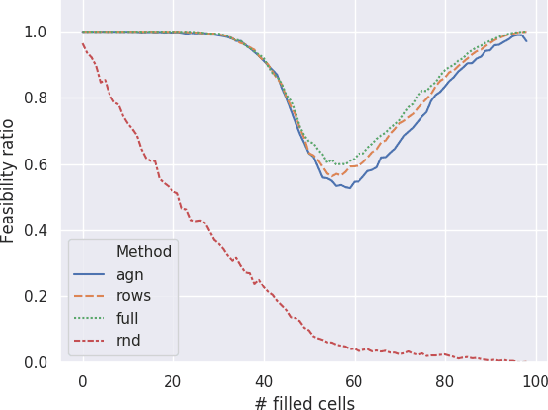
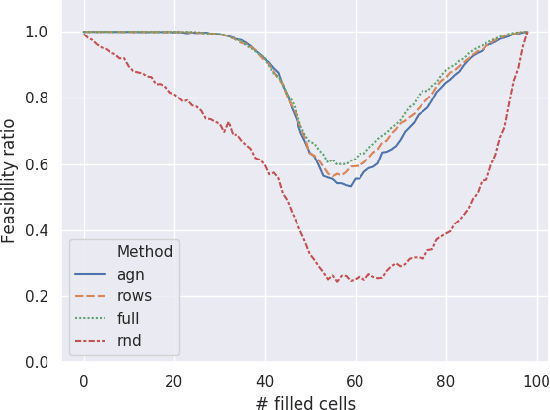
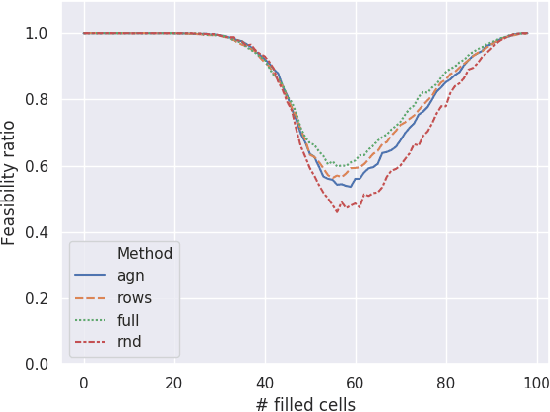
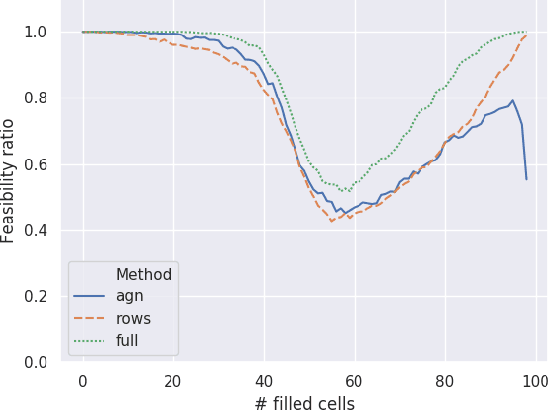
Abstract:Given enough data, Deep Neural Networks (DNNs) are capable of learning complex input-output relations with high accuracy. In several domains, however, data is scarce or expensive to retrieve, while a substantial amount of expert knowledge is available. It seems reasonable that if we can inject this additional information in the DNN, we could ease the learning process. One such case is that of Constraint Problems, for which declarative approaches exists and pure ML solutions have obtained mixed success. Using a classical constrained problem as a case study, we perform controlled experiments to probe the impact of progressively adding domain and empirical knowledge in the DNN. Our results are very encouraging, showing that (at least in our setup) embedding domain knowledge at training time can have a considerable effect and that a small amount of empirical knowledge is sufficient to obtain practically useful results.
Injective Domain Knowledge in Neural Networks for Transprecision Computing
Feb 24, 2020



Abstract:Machine Learning (ML) models are very effective in many learning tasks, due to the capability to extract meaningful information from large data sets. Nevertheless, there are learning problems that cannot be easily solved relying on pure data, e.g. scarce data or very complex functions to be approximated. Fortunately, in many contexts domain knowledge is explicitly available and can be used to train better ML models. This paper studies the improvements that can be obtained by integrating prior knowledge when dealing with a non-trivial learning task, namely precision tuning of transprecision computing applications. The domain information is injected in the ML models in different ways: I) additional features, II) ad-hoc graph-based network topology, III) regularization schemes. The results clearly show that ML models exploiting problem-specific information outperform the purely data-driven ones, with an average accuracy improvement around 38%.
Anomaly Detection using Autoencoders in High Performance Computing Systems
Nov 13, 2018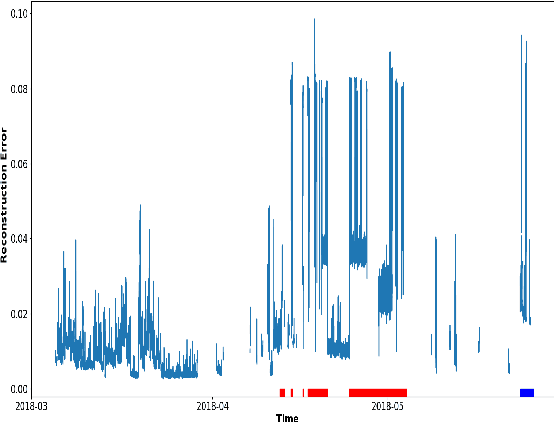

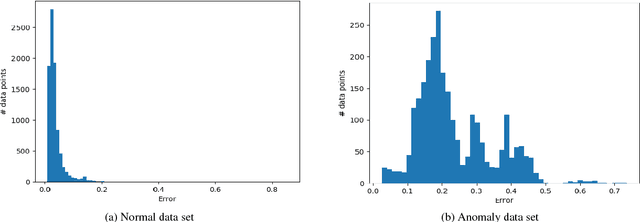
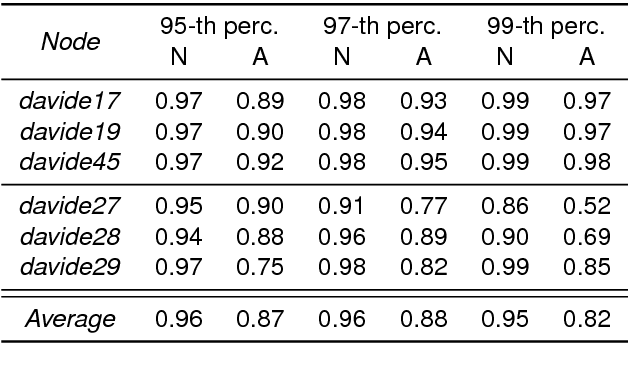
Abstract:Anomaly detection in supercomputers is a very difficult problem due to the big scale of the systems and the high number of components. The current state of the art for automated anomaly detection employs Machine Learning methods or statistical regression models in a supervised fashion, meaning that the detection tool is trained to distinguish among a fixed set of behaviour classes (healthy and unhealthy states). We propose a novel approach for anomaly detection in High Performance Computing systems based on a Machine (Deep) Learning technique, namely a type of neural network called autoencoder. The key idea is to train a set of autoencoders to learn the normal (healthy) behaviour of the supercomputer nodes and, after training, use them to identify abnormal conditions. This is different from previous approaches which where based on learning the abnormal condition, for which there are much smaller datasets (since it is very hard to identify them to begin with). We test our approach on a real supercomputer equipped with a fine-grained, scalable monitoring infrastructure that can provide large amount of data to characterize the system behaviour. The results are extremely promising: after the training phase to learn the normal system behaviour, our method is capable of detecting anomalies that have never been seen before with a very good accuracy (values ranging between 88% and 96%).
Boosting Combinatorial Problem Modeling with Machine Learning
Jul 15, 2018



Abstract:In the past few years, the area of Machine Learning (ML) has witnessed tremendous advancements, becoming a pervasive technology in a wide range of applications. One area that can significantly benefit from the use of ML is Combinatorial Optimization. The three pillars of constraint satisfaction and optimization problem solving, i.e., modeling, search, and optimization, can exploit ML techniques to boost their accuracy, efficiency and effectiveness. In this survey we focus on the modeling component, whose effectiveness is crucial for solving the problem. The modeling activity has been traditionally shaped by optimization and domain experts, interacting to provide realistic results. Machine Learning techniques can tremendously ease the process, and exploit the available data to either create models or refine expert-designed ones. In this survey we cover approaches that have been recently proposed to enhance the modeling process by learning either single constraints, objective functions, or the whole model. We highlight common themes to multiple approaches and draw connections with related fields of research.
Multi-Criteria Optimal Planning for Energy Policies in CLP
May 15, 2014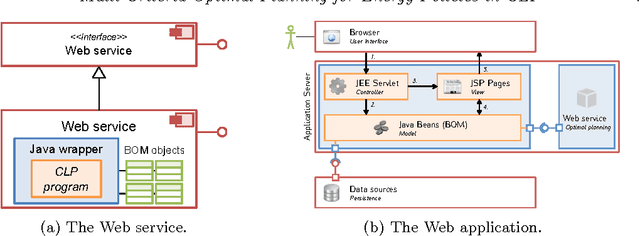
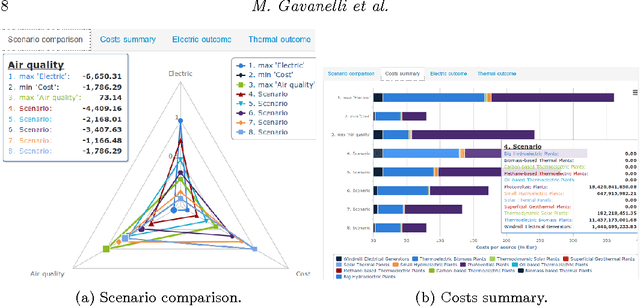
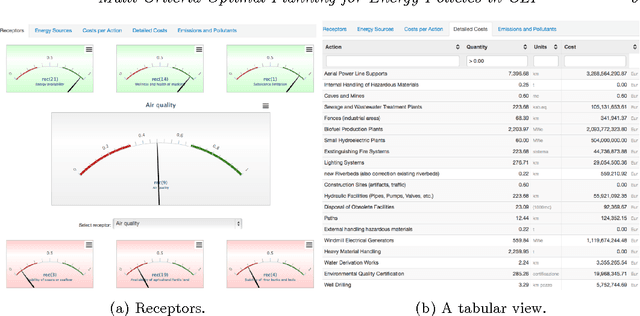
Abstract:In the policy making process a number of disparate and diverse issues such as economic development, environmental aspects, as well as the social acceptance of the policy, need to be considered. A single person might not have all the required expertises, and decision support systems featuring optimization components can help to assess policies. Leveraging on previous work on Strategic Environmental Assessment, we developed a fully-fledged system that is able to provide optimal plans with respect to a given objective, to perform multi-objective optimization and provide sets of Pareto optimal plans, and to visually compare them. Each plan is environmentally assessed and its footprint is evaluated. The heart of the system is an application developed in a popular Constraint Logic Programming system on the Reals sort. It has been equipped with a web service module that can be queried through standard interfaces, and an intuitive graphic user interface.
 Add to Chrome
Add to Chrome Add to Firefox
Add to Firefox Add to Edge
Add to Edge